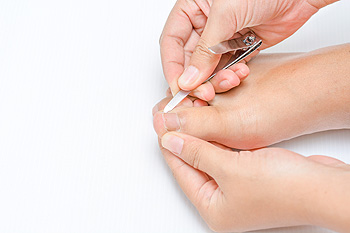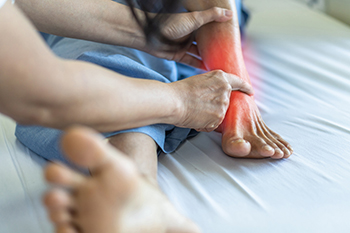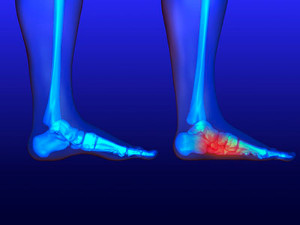Items filtered by date: February 2024
Exploring the Link Between Diet and Gout

Understanding the intricate relationship between diet and gout is important for those grappling with this painful joint condition. Gout, a form of arthritis, results from an excess of uric acid in the blood, leading to the formation of crystals in the joints, causing inflammation and intense pain. Dietary choices play a vital role in managing gout, as certain foods can either exacerbate or alleviate symptoms. Foods rich in purines, such as red meat, organ meats, and seafood, can elevate uric acid levels, thus triggering gout attacks. On the contrary, incorporating a diet abundant in fruits, vegetables, and whole grains has been linked to a lower risk of gout. Additionally, maintaining a healthy weight and staying hydrated are essential lifestyle factors that can positively impact gout management. By adopting a balanced and mindful approach to dietary habits, individuals can effectively contribute to the prevention and control of gout flare-ups. If you have developed gout, it is strongly suggested that you are under the care of a podiatrist who can help you to further manage this condition.
Gout is a painful condition that can be treated. If you are seeking treatment, contact Dr. Richard T. Bauer from Summit Foot & Ankle. Our doctor will treat your foot and ankle needs.
What Is Gout?
Gout is a form of arthritis that is characterized by sudden, severe attacks of pain, redness, and tenderness in the joints. The condition usually affects the joint at the base of the big toe. A gout attack can occur at any random time, such as the middle of the night while you are asleep.
Symptoms
- Intense Joint Pain - Usually around the large joint of your big toe, and it most severe within the first four to twelve hours
- Lingering Discomfort - Joint discomfort may last from a few days to a few weeks
- Inflammation and Redness -Affected joints may become swollen, tender, warm and red
- Limited Range of Motion - May experience a decrease in joint mobility
Risk Factors
- Genetics - If family members have gout, you’re more likely to have it
- Medications - Diuretic medications can raise uric acid levels
- Gender/Age - Gout is more common in men until the age of 60. It is believed that estrogen protects women until that point
- Diet - Eating red meat and shellfish increases your risk
- Alcohol - Having more than two alcoholic drinks per day increases your risk
- Obesity - Obese people are at a higher risk for gout
Prior to visiting your podiatrist to receive treatment for gout, there are a few things you should do beforehand. If you have gout you should write down your symptoms--including when they started and how often you experience them, important medical information you may have, and any questions you may have. Writing down these three things will help your podiatrist in assessing your specific situation so that he or she may provide the best route of treatment for you.
If you have any questions, please feel free to contact our office located in Latham, NY . We offer the newest diagnostic and treatment technologies for all your foot care needs.
It's Time for Beautiful Feet
Chronic Cases of Ingrown Toenails

Ingrown toenails can become chronic if left untreated. Causes can include improper nail trimming, wearing tight footwear, obesity, trauma, excessive sweating, fungal infections, and hormonal changes. Symptoms encompass pain, swelling, redness, and pus formation. Classification into three stages guides treatment decisions, with conservative measures recommended for mild cases. Conservative approaches include proper nail trimming, wearing roomy shoes, and using gauze or specialized materials to separate the nail from the flesh. Surgical intervention becomes necessary for stages two and three, involving either partial or total nail removal and destruction of the lateral matrix to prevent regrowth. Regular podiatry care and adherence to post-treatment protocols are necessary for successful management of ingrown toenails. If you have repeated experience with ingrown toenails, it is suggested that you schedule an appointment with a podiatrist for an evaluation of the stage you are experiencing, in addition to obtaining proper treatment.
Ingrown toenails can become painful if they are not treated properly. For more information about ingrown toenails, contact Dr. Richard T. Bauer of Summit Foot & Ankle. Our doctor can provide the care you need to keep you pain-free and on your feet.
Ingrown Toenails
Ingrown toenails occur when a toenail grows sideways into the bed of the nail, causing pain, swelling, and possibly infection.
Causes
- Bacterial infections
- Improper nail cutting such as cutting it too short or not straight across
- Trauma to the toe, such as stubbing, which causes the nail to grow back irregularly
- Ill-fitting shoes that bunch the toes too close together
- Genetic predisposition
Prevention
Because ingrown toenails are not something found outside of shoe-wearing cultures, going barefoot as often as possible will decrease the likeliness of developing ingrown toenails. Wearing proper fitting shoes and using proper cutting techniques will also help decrease your risk of developing ingrown toenails.
Treatment
Ingrown toenails are a very treatable foot condition. In minor cases, soaking the affected area in salt or antibacterial soaps will not only help with the ingrown nail itself, but also help prevent any infections from occurring. In more severe cases, surgery is an option. In either case, speaking to your podiatrist about this condition will help you get a better understanding of specific treatment options that are right for you.
If you have any questions please feel free to contact our office located in Latham, NY . We offer the newest diagnostic and treatment technologies for all your foot and ankle needs.
Ankle Pain May Occur From Running

Ankle pain while running can be a frustrating setback for any athlete. Several factors contribute to this discomfort, ranging from overuse injuries to biomechanical issues. Often, runners experience ankle pain due to excessive strain on the ligaments and tendons surrounding the ankle joint. This strain can result from repetitive movements, improper footwear, or inadequate warm-up routines. Additionally, running on uneven surfaces or sudden changes in terrain can exacerbate ankle pain by causing instability and stress on the joints. Poor running form, such as overpronation or supination, may also lead to ankle pain over time. Ignoring early signs of discomfort can worsen the condition and potentially lead to more severe injuries. To prevent ankle pain, runners should prioritize proper footwear, gradual training progressions, and regular stretching exercises to maintain flexibility and strengthen the ankle muscles. If you have developed ankle pain, and feel it may be due to running, it is suggested that you consult a podiatrist who can offer you correct treatment options, in addition to effective preventive techniques.
Ankle pain can have many different causes and the pain may potentially be serious. If you have ankle pain, consult with Dr. Richard T. Bauer from Summit Foot & Ankle. Our doctor will assess your condition and provide you with quality foot and ankle treatment.
Ankle pain is any condition that causes pain in the ankle. Due to the fact that the ankle consists of tendons, muscles, bones, and ligaments, ankle pain can come from a number of different conditions.
Causes
The most common causes of ankle pain include:
- Types of arthritis (rheumatoid, osteoarthritis, and gout)
- Ankle sprains
- Broken ankles
- Achilles tendinitis
- Achilles tendon rupture
- Stress fractures
- Tarsal tunnel syndrome
- Plantar fasciitis
Symptoms
Symptoms of ankle injury vary based upon the condition. Pain may include general pain and discomfort, swelling, aching, redness, bruising, burning or stabbing sensations, and/or loss of sensation.
Diagnosis
Due to the wide variety of potential causes of ankle pain, podiatrists will utilize a number of different methods to properly diagnose ankle pain. This can include asking for personal and family medical histories and of any recent injuries. Further diagnosis may include sensation tests, a physical examination, and potentially x-rays or other imaging tests.
Treatment
Just as the range of causes varies widely, so do treatments. Some more common treatments are rest, ice packs, keeping pressure off the foot, orthotics and braces, medication for inflammation and pain, and surgery.
If you have any questions, please feel free to contact our office located in Latham, NY . We offer the newest diagnostic and treatment technologies for all your foot care needs.
Understanding Flatfoot and the Benefits of Arch Support

Pes planus, commonly known as flatfoot, is a prevalent deformity characterized by the collapse of the midfoot arch during walking. This condition poses various risks, including bunions, tendinitis, plantar fasciitis, metatarsal pain, knee discomfort, and lower-back pain, particularly during prolonged uphill, downhill, and level walking. These issues can deter individuals from enjoying the physical and mental benefits of walking as an exercise. Using arch-support insoles can be beneficial as they contribute to a shorter stance time and enhance the generation of propulsion force, especially for the big toe during uphill and level walking and for metatarsals during level walking. These insoles help distribute contact areas more evenly across the midfoot, aiding in shock absorption during all types of walking. If you have flat feet and it is interfering with comfortable walking, it is suggested that you schedule an appointment with a podiatrist to address this condition. Appropriate support can improve comfort and reduce the risk of associated injuries, allowing individuals to enjoy the advantages of walking for their overall well-being.
If you have any concerns about your feet, contact Dr. Richard T. Bauer from Summit Foot & Ankle. Our doctor can provide the care you need to keep you pain-free and on your feet.
Biomechanics in Podiatry
Podiatric biomechanics is a particular sector of specialty podiatry with licensed practitioners who are trained to diagnose and treat conditions affecting the foot, ankle and lower leg. Biomechanics deals with the forces that act against the body, causing an interference with the biological structures. It focuses on the movement of the ankle, the foot and the forces that interact with them.
A History of Biomechanics
- Biomechanics dates back to the BC era in Egypt where evidence of professional foot care has been recorded.
- In 1974, biomechanics gained a higher profile from the studies of Merton Root, who claimed that by changing or controlling the forces between the ankle and the foot, corrections or conditions could be implemented to gain strength and coordination in the area.
Modern technological improvements are based on past theories and therapeutic processes that provide a better understanding of podiatric concepts for biomechanics. Computers can provide accurate information about the forces and patterns of the feet and lower legs.
Understanding biomechanics of the feet can help improve and eliminate pain, stopping further stress to the foot.
If you have any questions please feel free to contact our office located in Latham, NY . We offer the newest diagnostic and treatment technologies for all your foot and ankle needs.

